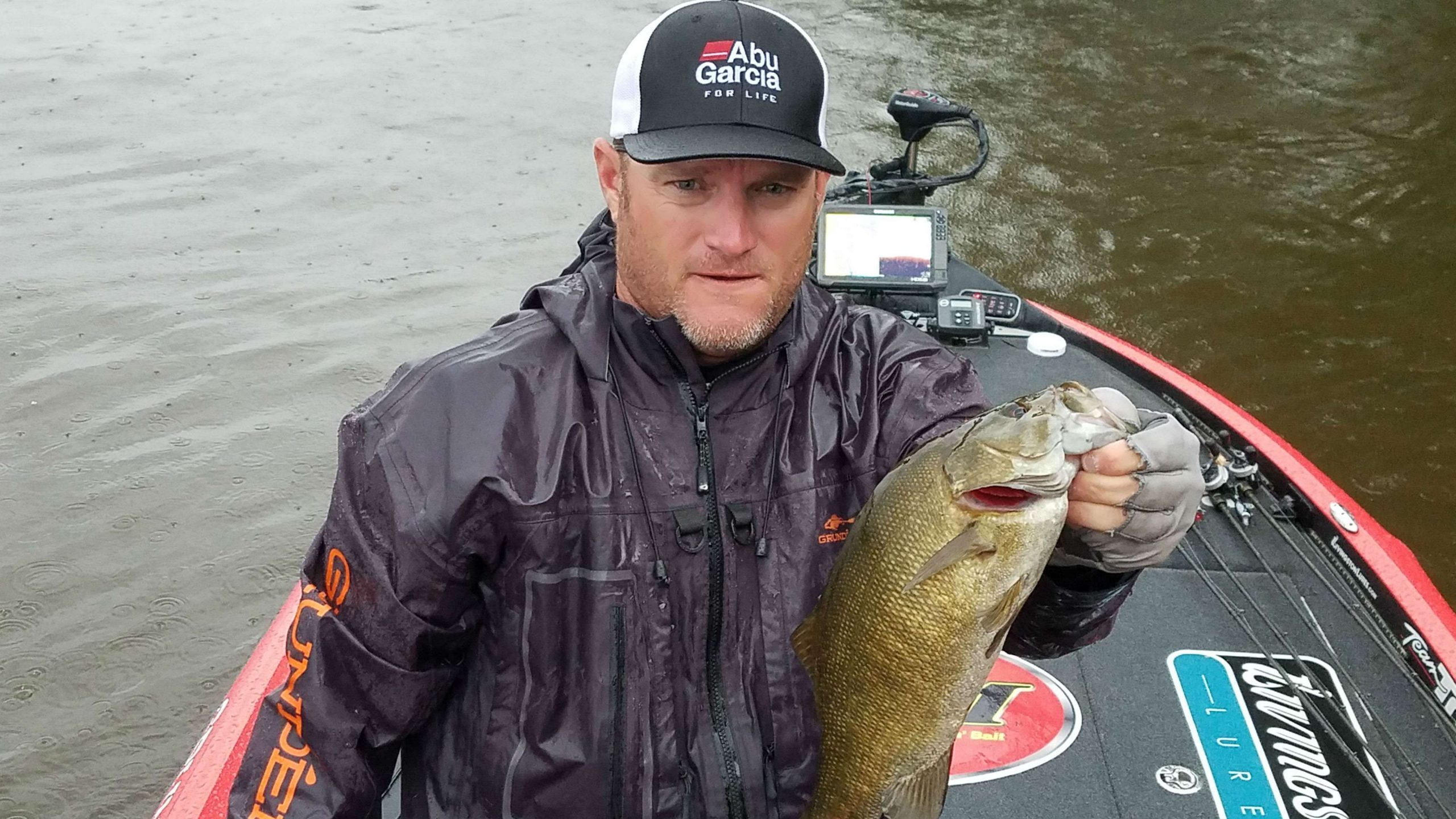
It seems like we’ve had nothing but rain for weeks. Where I live here in North Carolina the lakes are swelled up to over capacity, homeowners are having problems with water in their houses and we’ve even had a local school flooded. I think that’s pretty much the story all over the country. That doesn’t mean the fish aren’t biting, though.
The biggest problem with weather like we’ve had is getting it out of your head. The water’s dark and muddy. There’s debris all over the place. Things don’t look pretty and in most cases they don’t look fishy. But that’s in your head. It’s not bothering the fish at all.
In the shallow lakes they’re moving in and biting up against the seawalls, around bushes and even into backyard flower gardens. All that shallow water is full of insects and that brings up the baitfish. Where there’s bugs and baitfish there’ll be bass.
They’ll bite almost any bait if you get it up where they’re feeding. The important thing is to not forget that most of the water will be heavily stained or muddy so you’ll need to throw something they can find. Lures with a hard thump, maybe a rattle or something with bright colors are usually your best bet.
Out in the lakes, or when you can’t get your boat into your neighbors backyard, current breaks are almost always productive. The obvious ones are docks, big rocks, laydowns and manmade structures that stretch out into the water. But there are others that are just as productive. They’re just harder to find because they’re underwater.
However, harder doesn’t mean impossible. Main lake current breaks can be located by watching the surface of the water for anything unusual. Sometimes that’ll be a slack spot in otherwise rippling water or it might be a slight bulge in the surface, something that looks out of place.
Some of those spots will be small, some big. You’ll never know unless you fish them. And besides, size isn’t all that important with current breaks. Sometimes the smaller ones are better than the bigger ones.
Another option for those of you who live near or can fish highland reservoirs is to target small, hard to spot inflows into the lakes. In my neighborhood we call them fallouts. I’m talking about small ditches or depressions that funnel fast running water into the lake. They carry everything from insects to worms and nightcrawlers and that’ll often create a feeding frenzy that’s an anglers dream.
The stories about those places are legendary. It’s common for anglers to catch several species — largemouth, smallmouth, crappie, bream, shellcrackers, catfish, walleye — from a spot that’s not much bigger than an ordinary size bathroom.
The most popular lures to fish those inflows are small crankbaits, jerkbaits and spinnerbaits. There’s nothing fancy about fishing a spot like that. Position your boat out in relatively calm water and cast in as far as possible.
Don’t let this weather get in your head. Deal with the conditions as you find them.
Don’t blend.




